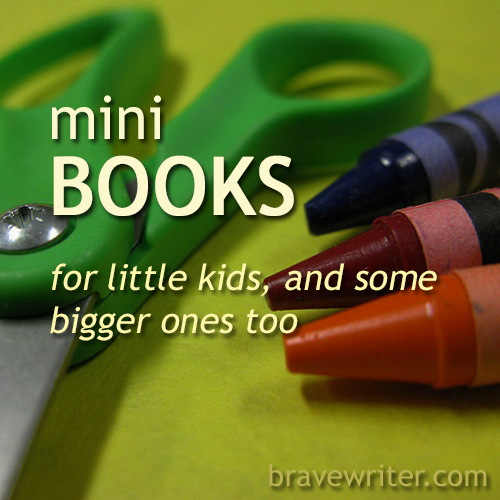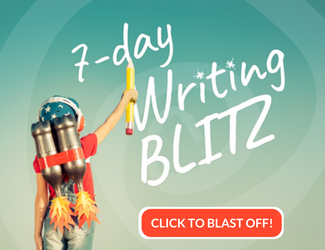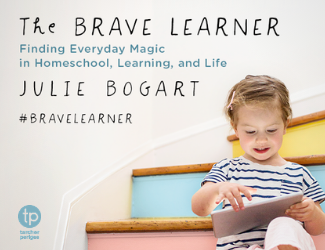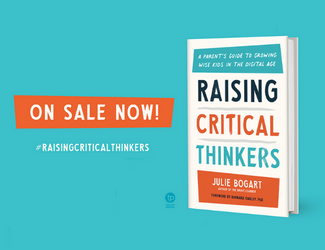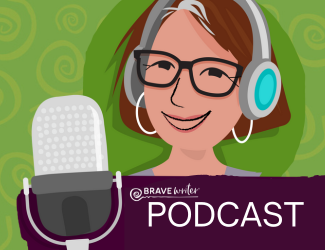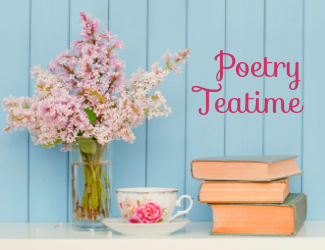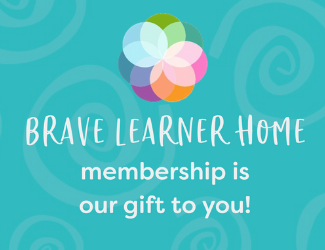Little Books
AKA Mini Books
Last week I gave you some tips on writing with young kids. I mentioned what I have called “little books” or “mini books.” These are not lap books (which I just discovered, LOVE and will discuss another day).
Mini books can contain many things, but the format is similar. A mini book is usually white paper folded in half with a colored piece of paper folded around it. All of the pages are stapled along the folded edge. Voila! Mini book.
When my 15 year old daughter was under ten, she made these by the dozens. I used to simply make the books at night and she’d fill them the next day. We kept a basket with ongoing mini books in our living room. These are typically not one day projects. Here are some book ideas that work for content:
Alphabet book
For truly young kids, this is a fun book. Make sure you use thirteen sheets of paper (so there will be 26 pages). On each page, use a black marker and make the capital letter and the lower case letter. (I made them so they were outlines of the letters so they could be colored in.) Then hunt through magazines with your child to find pictures that start with the sound of the letter on the page. Let your child cut the pictures out and glue them to the letter page.
Animal book
Similar to the alphabet book, your child can keep adding to a book each of the animals that he discovers in magazines or books that he wants to remember. Glue the picture on the page, read about the animal and then ask your child to narrate to you about the animal (say, “What should we put in this book to tell people about this animal?”). Then write down what he says.
Homonym book
Kids love the discovery of homonyms when they are reading well enough. (Although occasionally a child will rebel against the homonym crying foul for that confusing spelling!) Make this discovery into a fun book. Each two page spread can contain two words that sound like each other but are spelled differently. Draw the picture that goes with each word. (Or you can make it a guessing game: put one word on the front of a page and then ask the reader to guess what the homonym is on the other side of the page. Obviously the word will be the same sound, but the idea is to guess what it represents that is different than the word on the front of the page.)
For instance:
Birth – Berth
Cents – Scents
Flea – Flee
Flour – Flower
Hare – Hair
Hart – Heart
Knight – Night
Muscle – Mussel
Pear – Pair
Rain – Rein
Roam – Rome
Right – Write
Sax – Sacks
Serf – Surf
Soared – Sword
Thyme – Time
Week – Weak
Yoke – Yolk
Those ought to get you started.
Nature book
We started mini books about nature long before I had even heard of nature notebooks and Charlotte Mason. We didn’t draw in them, the way she did. I Xeroxed photos out of books that corresponded with the natural settings we had visited. Then we labeled them and I jotted down the kids’ narrations of the experiences. We did great ones for the ocean (waaah – I’m not bitter that I am now land-locked, honest!), for a petting farm/zoo we visited, and for trips to a little hiking spot in California (included birds and flowers etc. that we found there).
Another time, a hike led us to become interested in spider webs. The mini book format was too small for these. I hole punched and tied together six black pieces of heavy weight card stock. I used them horizontally so that the pages were long rather than tall. We used white gel pens to do our writing. We observed and then made our own spider webs for each kind of web using cotton or drawing with pens or white thread. They turned out really well and the kids loved to make them.
Fairytale book
We used a different format for these books too. I had manila card stock lying around so we used it. We read a fairytale and then we’d draw a picture to go with it. We used thread, colored paper, magazine cut outs and so on to make Rapunzel’s hair or the hundred mattresses with the pea underneath. We did one per week. I hole punched these and kept them together with metal rings.
The final books covered an entire year’s worth of fairytale readings.
Cookbook
For slightly older children who love to cook, the cookbook is a winner. Each time a child tries a recipe, he or she can copy it and include a photograph of the final product. You can even include reviews of the foods from those who enjoyed them!
Hope that gets you started. The sky’s the limit!
–julie
Image by frankieleon (cc cropped, darkened, text added)

